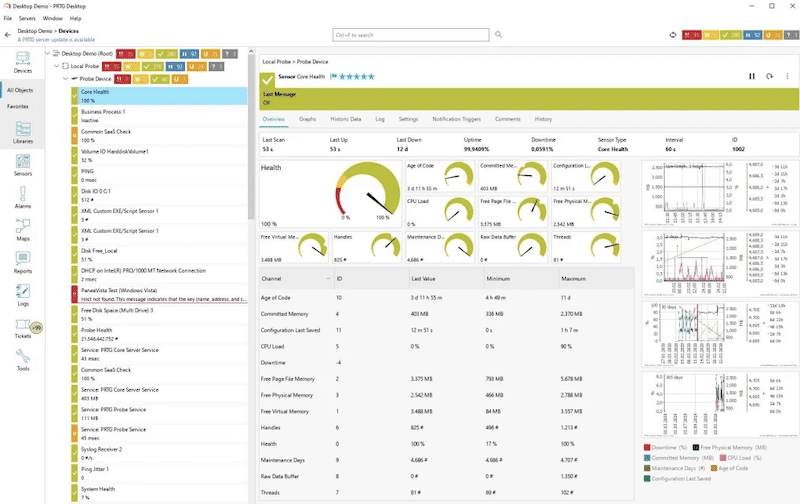We may earn a commission if you make a purchase through the links on our website.
The Best Network Engineer Tools

UPDATED: June 17, 2024
As a network engineer, you need the right tools to keep your networks running smoothly. Fortunately, there are different tools available out there to help you get the job done. And although it is essential to have the right tools, it is also paramount to know how to use them.
In this blog post, we'll explore some of the best network engineering tools available for free and paid use. Whether you're troubleshooting issues, monitoring traffic, or optimizing performance, you will find the right tool for you.
What to consider when finding your network engineer tools
According to the Computer Network Engineer career guide, to remain a qualified network engineer (and fulfill a network engineer’s vital roles), you’ll need to be proficient with multiple network tools (and practices). We can categorize network engineering tools as:
- Packet analyzers To capture and analyze network traffic. Examples are Wireshark or TCPDump.
- Remote connection and terminal emulators Tools that help you connect remotely and execute CLI commands. SSH and Telnet clients for connecting to remote (or local) devices such as SecureCRT and PuTTY.
- Network monitoring tools Tools that help keep track of the health and performance of your network and its devices. They also help troubleshoot and optimize. Examples are PRTG Monitor or SolarWinds.
- Network mappers and visualization Tools that help visualize the network topology. They can also help in visualizing networks. Examples are Nmap, Zenmap, or Microsoft Visio.
- Virtualization tools These tools help create virtual networks and test configurations before deploying them in production.
Although the list above is like the Swiss Army knife for any network engineer, there are other things to consider.
Networks have evolved. They are now becoming increasingly complex as more mission-critical applications compete for bandwidth, and the number of devices on the web increases due to technologies like the IoT, edge computing, and the cloud.
A network engineer’s toolset must also be ready for such transformation. For example, network engineers must be able to build scalable networks in the cloud with services like AWS VPC or Route 53. Network engineers must also be capable of making scalable and resilient SD-WANs and know how to handle SASE (or SWGs). Learning to use artificial intelligence (AI) and automation frameworks to build, maintain, and troubleshoot networks is also essential.
And last but not least, cybersecurity threats are constantly increasing, requiring secure networking to act as an early warning system for cybersecurity defenses. Although cybersecurity is already a field, as a network engineer, knowing how to use the right network security tools to protect and build impenetrable networks is paramount.
The Best Network Engineer Tools
Note: Keep in mind that the following network engineer tools are not multi-platform. Some tools are only supported by Windows, others by macOS, and others by Linux, while some are multi-platform.
1. PRTG Network Monitor – FREE TRIAL
Paessler PRTG Network Monitor is hands down, one of the most robust network engineering tools on the market. It allows you to monitor virtually anything on your network (running locally or remotely), including systems, devices, traffic, bandwidth, IoT, applications, etc. The tool supports various technologies such as Ping, SNMP, WMI, SSH, HTTP requests, and flow protocols such as IPFIX, jFlow, sFlow, and NetFlow (to name a few). PRTG comes with all the qualities of a monitoring solution, including network discovery, sensors, agent/agentless, maps/dashboards, reports, alerts, and more. PRTG Network Monitor is only supported by Windows.
- Alternative for other OSs: Nagios XI (Linux, Vmware, Windows), ManageEngine OpManager (Linux and Windows), and Zabbix (Linux, Raspberry Pi, and more.)
- Pricing: Starting from $1,899 /license. PRTG Network also provides a freeware edition (for up to 100 sensors.)
You can start with a 30-day free trial of the full edition.
2. Wireshark (Packet Analyzer)
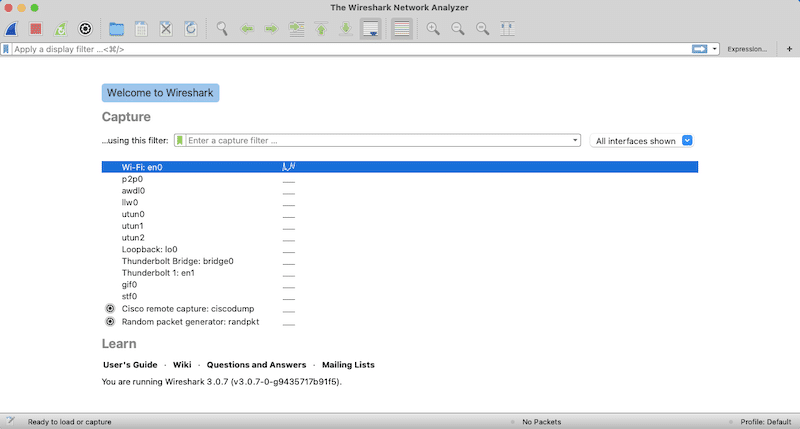
Wireshark is one of the most popular network engineering tools and the go-to standard in the field of packet analyzers. The reason this tool is so popular, aside from being free and open-source, is that it provides robust support for network troubleshooting, analysis, and security. It provides an in-depth view of network activities and supports many protocols and file formats. It allows live capture, offline analysis, and robust display filters. Wireshark is a big deal for network engineers. It has been labeled as “The Most Important Open-Source App of All Time” by eWeek, the number one in Insecure.Org / Sectools.Org, and has won many other awards. Wireshark is available for Windows and macOS.
- Alternative for other OSs: TCPDump
- Pricing: Free
- Download Wireshark
3. PuTTY/SuperPuTTY (Remote Secure Access)
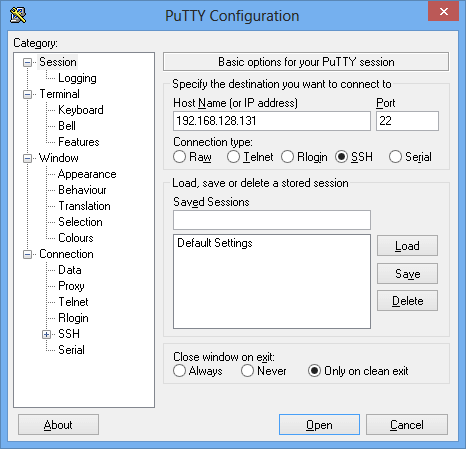
If you need access to remote devices and servers from a Windows machine, you’ll need PuTTY, a free SSH and Telnet client. PuTTY is a fully open-source terminal emulator. It is a lightweight and easy-to-use tool, perfect for network engineers who need access to remote CLIs. PuTTY is developed, constantly maintained, and supported by a group of volunteers. This tool is only supported by Windows. For more advanced features, SuperPuTTY (a fork of PuTTY) is an open-source and free terminal emulator that offers additional features such as a tabbed interface and automatic re-connections.
- Alternative for other OSs: iTerm (for macOS) and OpenSSH or KiTTY (Linux)
- Pricing: Free
- Download PuTTY or SuperPuTTY
4. SecureCRT (Remote Secure Access)
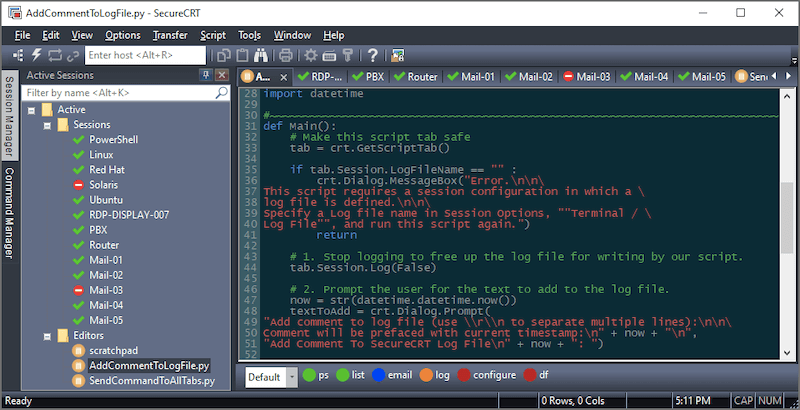
SecureCRT (by Vandyke) is another powerful Telnet and SSH client that provides secure access to remote devices. It is free (as PuTTY), but its code is proprietary. SecureCRT is a commercial tool and requires a license. Although you would need to pay for SecureCRT, it has many advantages over PuTTY (which might be good considering its low price). First, SecureCRT is cross-platform, supporting Windows, macOS, and Linux. It also offers advanced features such as session management, automation, scripting, tabbed sessions, file transfer, data tunneling, and more. Another highlight of SecureCRT is its security. On top of its encryption protocols, SecureCRT also offers additional security features such as X.509 certificate authentication, FIPS 140-2 validation, and password management.
- Pricing: $190.00 USD (with 3 years of updates) $119.00 USD (with 1 year of updates)
- Download SecureCRT through its free trial.
5. GNS3 (Network Mapping and Visualization)
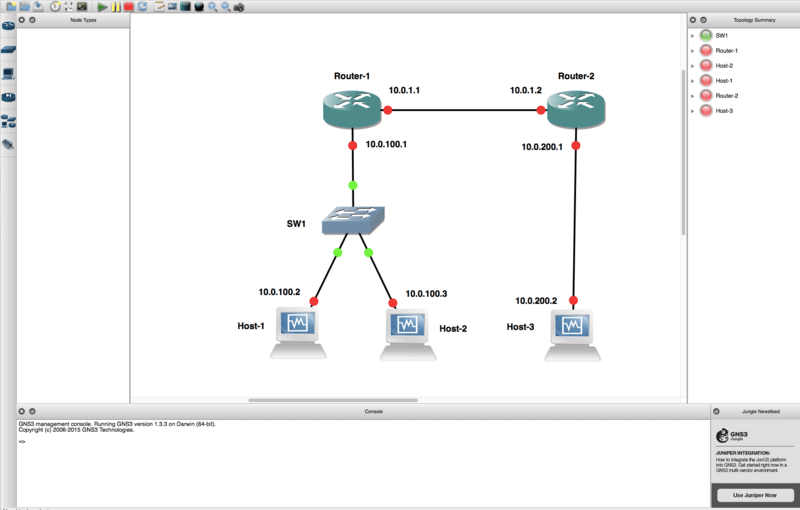
GNS3 is a free and open-source network emulator widely used by network engineers. It allows engineers to emulate, configure, test, and troubleshoot virtual and real networks. This tool is popular among engineers preparing for certification exams such as CCNA and CCNP or testing and verifying real-world deployments. Although GNS3 only supported Cisco emulations, it has now evolved to support other vendors like Brocade vRouters, Cumulus Linux switches, Docker instances, and HPE VSRs. GNS3 is cross-platform. You can install it on Windows, Linux, or macOS machines.
- Pricing: Free
- Download GNS3
6. Nmap/Zenmap (Network Mapping and Visualization)
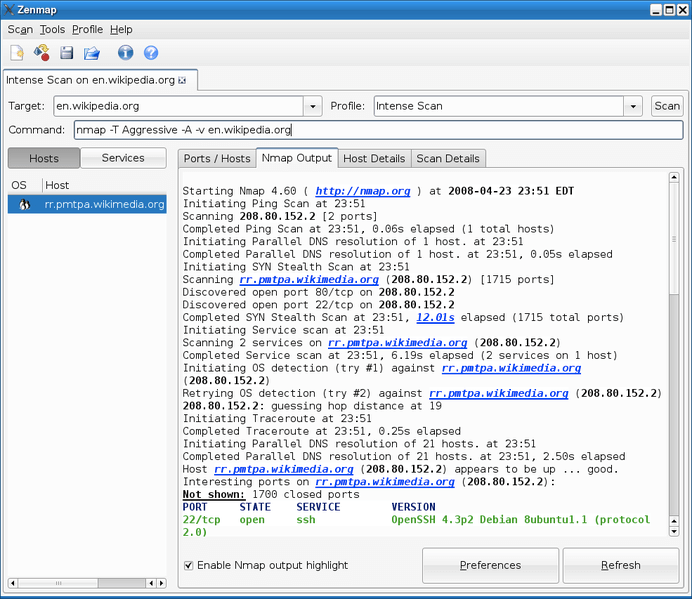
Nmap is a free and powerful CLI-based port scanner used by network engineers and security professionals. It can be used for network mapping, discovery, security auditing, inventorying, uptime monitoring, and vulnerability scanning. Nmap uses advanced techniques like port scanning, OS detection, and ping sweeps to find a lot of information on hosts on the network. For example, it can discover which hosts are connected, what services they’re offering, and the type of packet filters/firewalls present. It runs on all major operating systems (Windows, macOS, Linux (RPM), or any other OS (source code)). Zenmap is the GUI version packed with Nmap itself.
- Pricing: Free
- Download Nmap or Zenmap
7. Notepad++
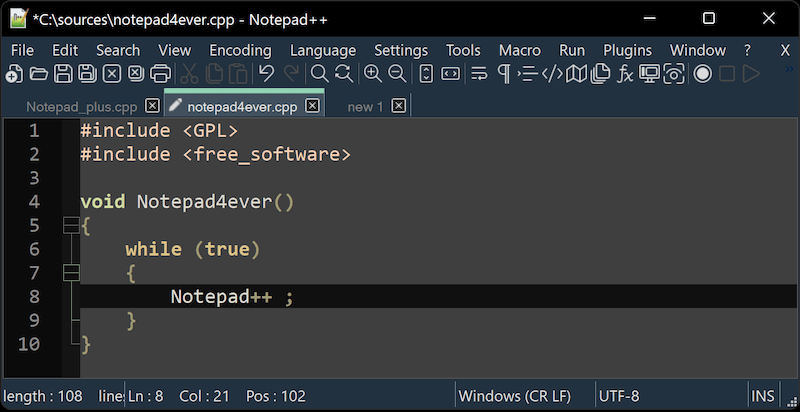
Notepad++ is a free and open-source code editor that replaces the default text editor on Windows. This simple text editor is considered one of the best network engineering tools for various reasons. First, Notepad++ can be used for editing configuration files, writing scripts, and programming. With features such as syntax highlighting, autocomplete, and search/replace, network engineers can make their lives easier. A network engineer can copy router configuration files or firewall rules and use the code editor to edit certain portions of the configuration file. They can also use it to write network automation scripts, compare configurations side-by-side, analyze log files, or troubleshoot network issues. Notepad++ is only supported by Windows.
- Alternative for other OSs: BBEdit (Mac), VimEditor (Linux), or Notepadqq (Linux)
- Pricing: Notepad++ is 100% free.
- Download Notepad++
8. iPerf/iPerf3 (Network Diagnostics)
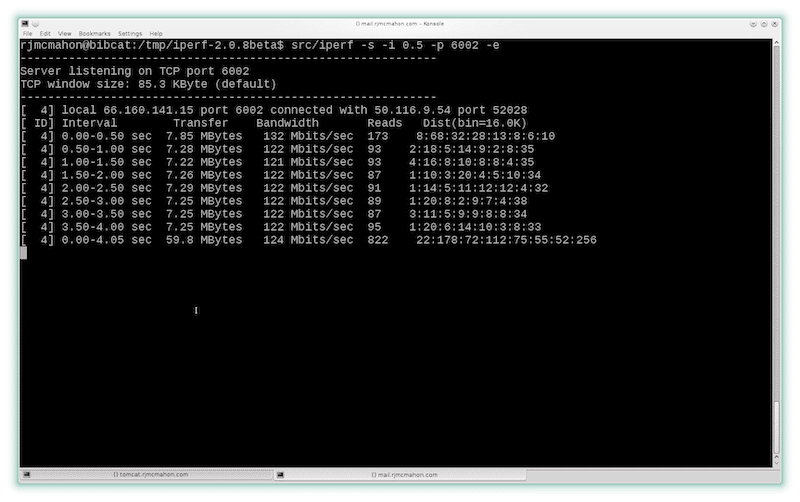
Another helpful tool for network engineers is Iperf. You can use this free and open-source tool to measure the maximum achievable bandwidth and test and optimize network performance. Iperf works as a client and server, allowing you to create data streams to measure throughput between two endpoints in one or both directions. It supports TCP, UDP, and SCTP protocols. It will enable you to specify datagram size, report throughput, and packet loss (in UDP tests), measure bandwidth, report MTU size, and more in TCP and SCTP tests. iPerf3 is the new and advanced iPerf implementation, but it does not share code and is not backward compatible. Both tools are supported by Windows, Linux, Android, MacOS X, FreeBSD, OpenBSD, NetBSD, and more.
- Alternative with GUI: JPerf (Java Perf) — a cross-platform GUI for running iPerf.
- Pricing: Free
- Download iPerf or iPerf3
9. Python
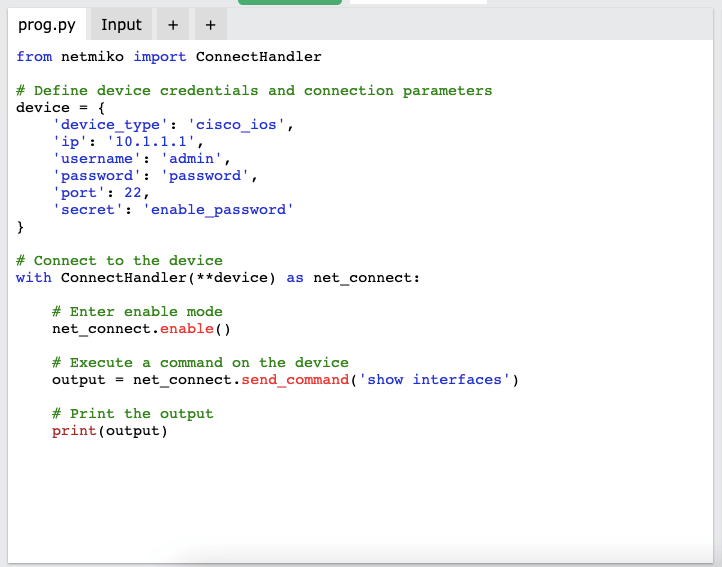
Network engineers have often avoided programming languages like Python and even dismissed learning about them. But now, programming, especially Python, is the way to go for any networking professional. And there are many good reasons for this. First, Python is a powerful and versatile programming language that can help engineers automate complex tasks. This makes it an ideal choice for network automation and configuration management. And second, Python has a vast ecosystem of libraries and frameworks for networking, including:
- Paramiko for SSH connectivity,
- NAPALM for network device interactions,
- Netmiko for network device automation,
- Scapy for packet manipulation.
- Nornir for network automation.
- Jinja2 for template creation.
Python is platform-independent. It can be used on various OSs, including Linux, Windows, and macOS.
- Pricing: Python is an open-source programming language. So it is entirely free!
- Download Python
10. Microsoft Visio (Network Mapping and Visualization)
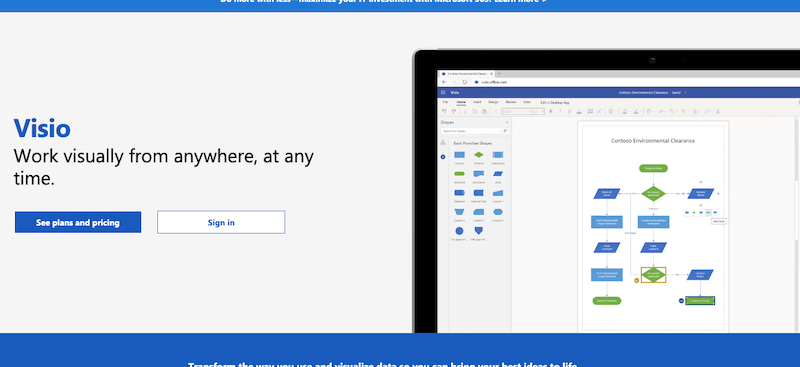
Microsoft Visio is one of the best network diagramming and documentation tools for network engineers. Visio is also a fantastic tool for network engineers who want to visualize complex configurations and create flowcharts, network diagrams, site plans, or site surveys. It has multiple templates with pre-built menus and specific objects for networking. For example, you can download Cisco objects and use them to create professional-looking Cisco-based network diagrams.
- Alternative for other OSs: Draw.io (online) LucidChart (Cloud-based), or Google Drawings (Cloud-based)
- Pricing: Microsoft Visio offers SaaS or on-premise versions. For SaaS, there are two plans (with different features-set), Plan 1 for USD$5.00 and Plan 2 for USD$15.00 per user per month. For on-premises: Visio Standard 2021 (USD$369.99) and Visio Professional 2021 (USD$719.99).
- Free Trial: Sign up for a one-month free trial.
11. SolarWinds Engineer’s Toolset (Network Monitoring)
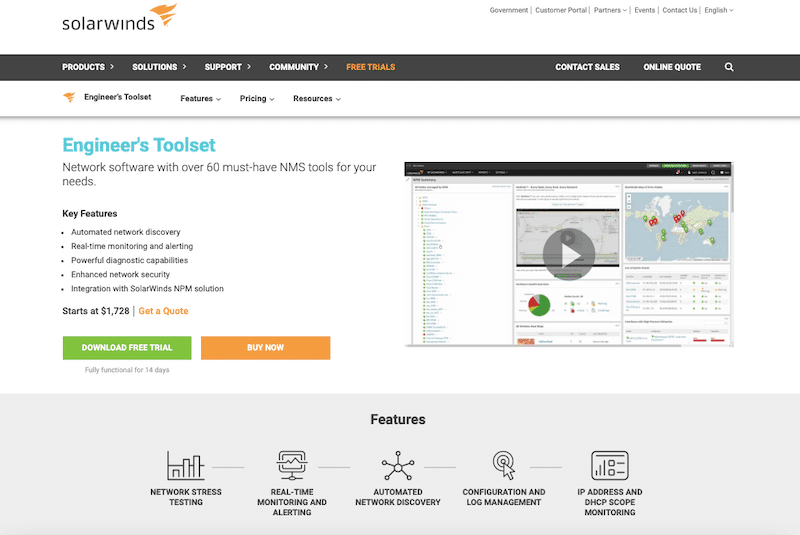
SolarWinds is a well-known global software company that delivers management tools for network and infrastructure monitoring and a plethora of different technical services. Among the company’s main offerings is Orion, a comprehensive performance monitoring platform for IT. SolarWinds provides different tools for network monitoring (some based on Orion), configuration management, and security. Among SolarWinds’s solutions, you can find free and paid tools. One of SolarWinds’s most popular solutions for engineers is their Network Engineers Toolset, a bundle of 60 must-have network monitoring tools. They include tools for network discovery, real-time monitoring/alerting, diagnostics, network security, and more.
- OS and platform support: SolarWinds tools work on the cloud, hybrid, or on-premises.
- Pricing: Network Engineers Toolset starts at $1,728. For more information contact sales.
- Download: Download the free 14-day fully functional trial.
12. Ansible (Configuration Management and Network Automation)
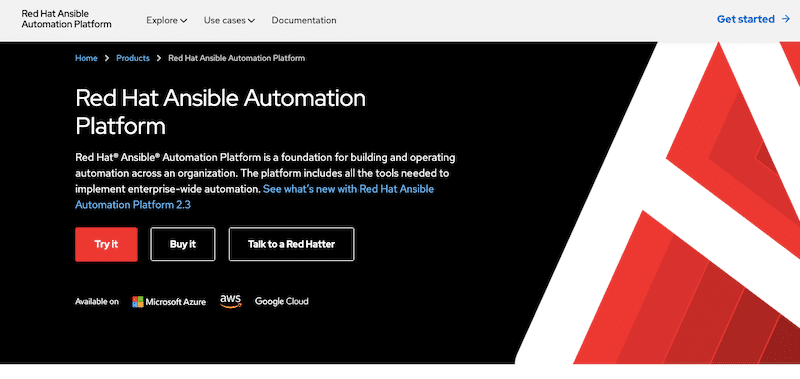
Ansible (By Red Hat) is an open-source and cross-platform IT automation tool. Ansible is a fantastic tool for network engineers because it can automate routine and time-consuming tasks. With Ansible, you can automate essential networking tasks such as configuration management, provisioning, hybrid cloud, edge, and even security-related tasks. To begin with Ansible, you’ll need to learn the human-readable language called YAML, which allows you to define automation tasks. These tasks are organized into playbooks, which in turn define the sequence of tasks to be executed. One of the highlights of Ansible is that since it is powered by Red Hat, you’ll also get enterprise-level engineering and support.
- Alternatives to Ansible: Chef and Puppet
- Pricing: Contact Red Hat for pricing
- Free Trial: Subscribe to get a 60-day free trial of Ansible (you’ll need Red Hat Enterprise Linux to run the trial).
13. Snort (Security Tool)
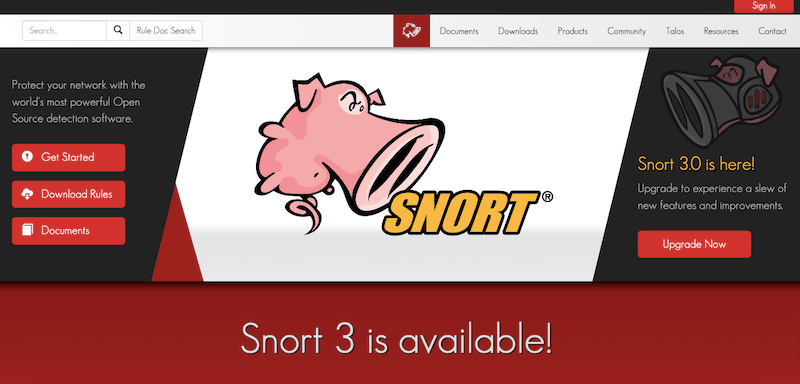
Snort (now by Cisco) is one of the most popular Intrusion Detection Systems/ Intrusion Prevention Systems (IDS/IPS). It was initially developed in 1998 as an open-source project by Marty Roesch (founder of Sourcefire). In 2012 Cisco Systems bought Sourcefire along with Snort. This IDS/IPS tool is one of those tools loved by network engineers, cybersecurity professionals, and hackers. There are many reasons why people love it; first, it is open-source and free, and second, it can monitor network traffic in real-time, analyze it, and generate alerts for potential security threats. Snort is more than a simple packet sniffer. It is also a detection engine and a logging and alerting system. It runs on different platforms, including Linux, Windows, and macOS, and can be used to monitor both wired and wireless networks.
- Pricing: Snort is entirely free, but you can buy rule subscriptions. Personal ($29.99 each), and Business ($399 per sensor). Both licenses are for a one-year subscription.
- Download Snort.
14. VirtualBox (Oracle)
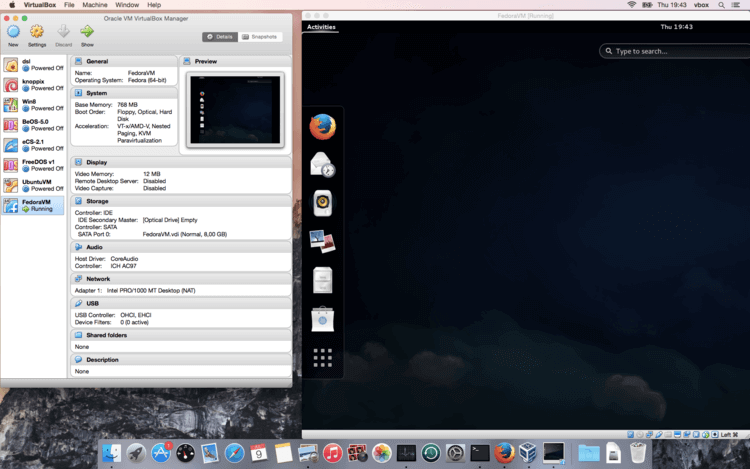
VirtualBox is free and open-source virtualization software developed by Oracle. It is one of the preferred network engineering tools because it is one of the few virtualization tools available for free. It is also compatible with Windows, Linux, macOS, and Solaris hosts and supports a massive array of guest Operating Systems. Network engineers like to use VirtualBox for many reasons, but most importantly for testing and creating network configurations. They can create simulations for different network topologies, operating systems, and applications without using hardware. VirtualBox allows network engineers to test and create networks in safe and isolated environments without affecting systems in production.
- Alternatives to VirtualBox: VMware Workstation, Hyper-V, or Parallels Desktop.
- Download VirtualBox.
15. TCPDump (Packet Analyzer)
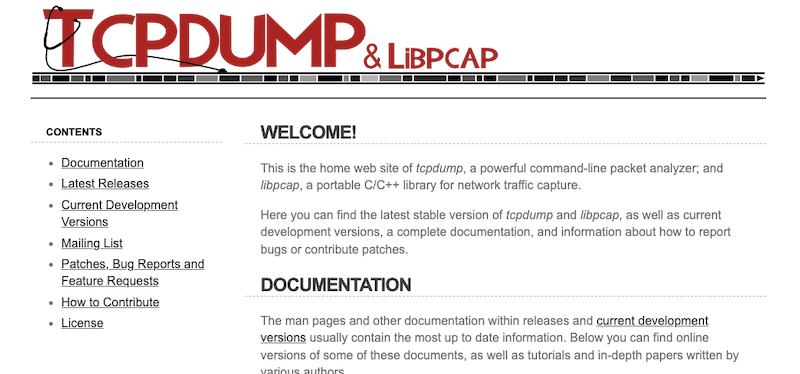
TCPDump is a UNIX-based data-network packet analyzer. As opposed to the popular GUI Wireshark, TCPDump is entirely CLI-based. TCPDump allows you to view TCP/IP flows or any packet being transmitted or received over a network. It is open-source software (BSD license), completely free, and supported by many operating systems, including UNIX-based Linux, macOS, Solaris, FreeBSD, etc. This packet analyzer is based on the libpcap library to capture all sorts of packets. TCPDump is loved among network engineers because it allows them to do exhaustive packet analysis. Furthermore, TCPDump is also lightweight, captures packets in real-time, allows collaboration, and is flexible (uses filters to manage the output).
- Alternatives to TCPDump: Wireshark (Windows, macOS, Linux) and NetworkMiner.
- Download TCPDump
Other free and basic network utilities worth being mentioned
Most of the tools we have gone through are comprehensive network tools that perform a set of tasks. The following list of tools shows the essential built-in utilities and some other sideline tools worth mentioning. These tools should be on your mind (and toolset) when engineering a network.
- OS built-in utilities and commands Keep the following commands on your toolset: Ping, Traceroute, Ip route (route print), Netstat (or lsoft), Ipconfig/ipconfig, Nslookup, and Whois.
- Subnet and IP calculator Use these calculators to quickly calculate network addresses, subnet masks, and IP addresses.
- Spreadsheets Useful for network engineers to organize data (configurations, IPs, device inventories, etc.). They also help in planning, documentation, troubleshooting, reporting, and even collaboration.
- FTP/TFTP Software Allows secure and fast file transfers. This software is useful for transferring configuration files, deploying patches, etc.
Final words
In this post, we went through the best network engineering tools. In summary, consider the go-to network engineering tools like Wireshark, PuTTY, SecureCRT, and Nmap/Zenmap. A quite comprehensive tool is SolarWinds Engineer’s Toolset which comes with +60 essential tools. You may also want to consider documentation and visualization tools like GNS3 and Visio to help design your networks. If you like to keep on the edge and introduce automation in your networks, think of Ansible and Python.
